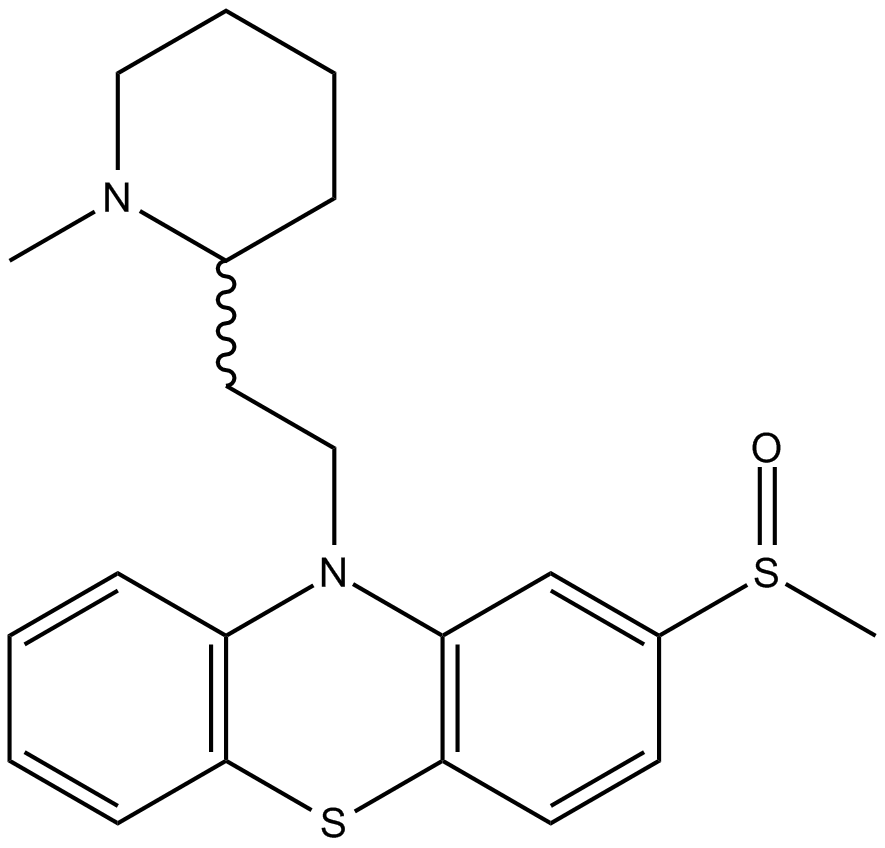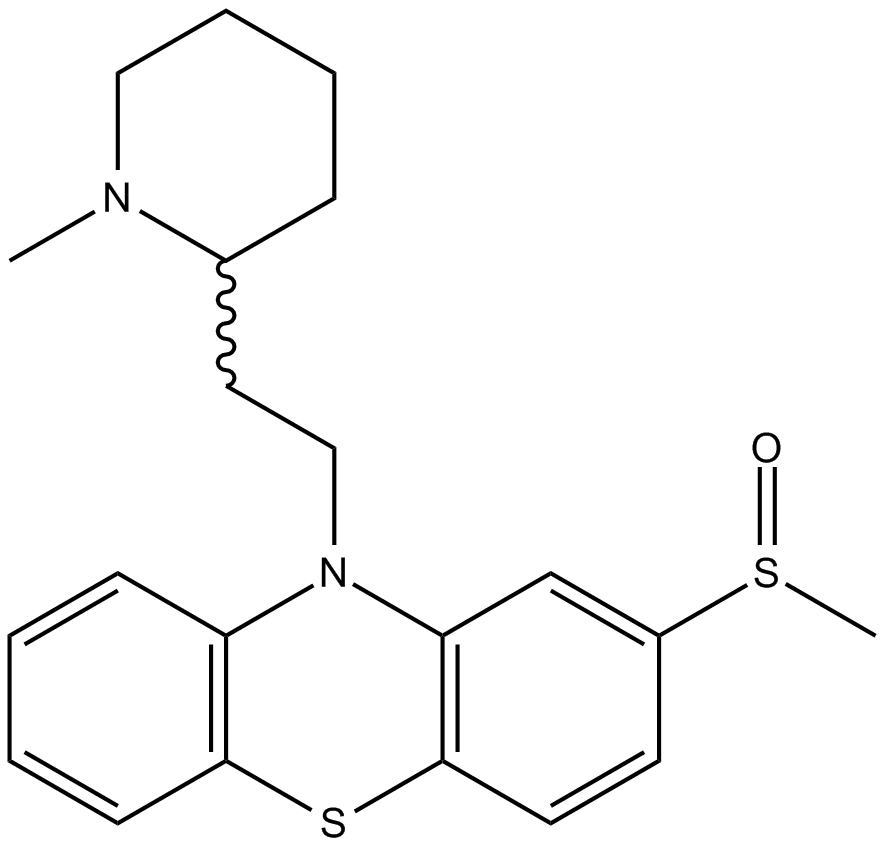Mesoridazine
Mesoridazine (CAS 5588-33-0) is a dopaminergic antagonist primarily targeting dopamine D2 receptors (K_d = 19 nM). As an active metabolite of the atypical antipsychotic thioridazine, mesoridazine demonstrates marked inhibitory effects on both pre- and postsynaptic dopamine receptors, impacting dopamine and acetylcholine neurotransmission. Furthermore, mesoridazine engages histamine H1 (K_d = 1.8 nM), muscarinic acetylcholine (K_d = 69 nM), α1-adrenergic (K_d = 2 nM), and α2-adrenergic (K_d = 1600 nM) receptors. Its receptor profile makes mesoridazine valuable for neuroscience research into antipsychotic mechanisms and neurotransmitter regulation.
| Physical Appearance | A solid |
| Storage | Store at -20°C |
| M.Wt | 386.57 |
| Cas No. | 5588-33-0 |
| Formula | C21H26N2OS2 |
| Solubility | insoluble in H2O; ≥16.35 mg/mL in DMSO; ≥3.1 mg/mL in EtOH |
| Chemical Name | 10-(2-(1-methylpiperidin-2-yl)ethyl)-2-(methylsulfinyl)-10H-phenothiazine |
| SDF | Download SDF |
| Canonical SMILES | CN1C(CCN2c(cc(cc3)S(C)=O)c3Sc3c2cccc3)CCCC1 |
| Shipping Condition | Small Molecules with Blue Ice, Modified Nucleotides with Dry Ice. |
| General tips | We do not recommend long-term storage for the solution, please use it up soon. |
| Animal experiment:[3] | |
|
Animal models |
Swiss-Webster albino mice, 30~33 g |
|
Dosage form |
10, 30 and 45 mg/kg Intraperitoneal Injection |
|
Applications |
Mesoridazine (10 mg/kg) did not completely abolish the locomotor activity, but did prevent the activity-increasing effect of mescaline. At high doses of 30 and 45 mg/kg, mesoridazine blocked not only the activity-increasing effect of mescaline but also the normal locomotor movements. |
|
Note |
The technical data provided above is for reference only. |
|
References: 1. Niedzwiecki DM, Cubeddu LX, Mailman RB. Comparative antidopaminergic properties of thioridazine, mesoridazine and sulforidazine on the corpus striatum. Journal of Pharmacology and Experimental Therapeutics, 1989, 250(1): 117-125. 2. Richelson E, Nelson A. Antagonism by neuroleptics of neurotransmitter receptors of normal human brain in vitro. European Journal of Pharmacology, 1984, 103(3-4): 197-204. 3. Shah NS. Influence of psychotropic drugs and β-diethylaminoethyl-diphenylpropylacetate (SKF 525-A) on mescaline-induced behavior and on tissue levels of mescaline in mice. Biochemical Pharmacology, 1976, 25(5): 591-597. |
|
Quality Control & MSDS
- View current batch:
Chemical structure









